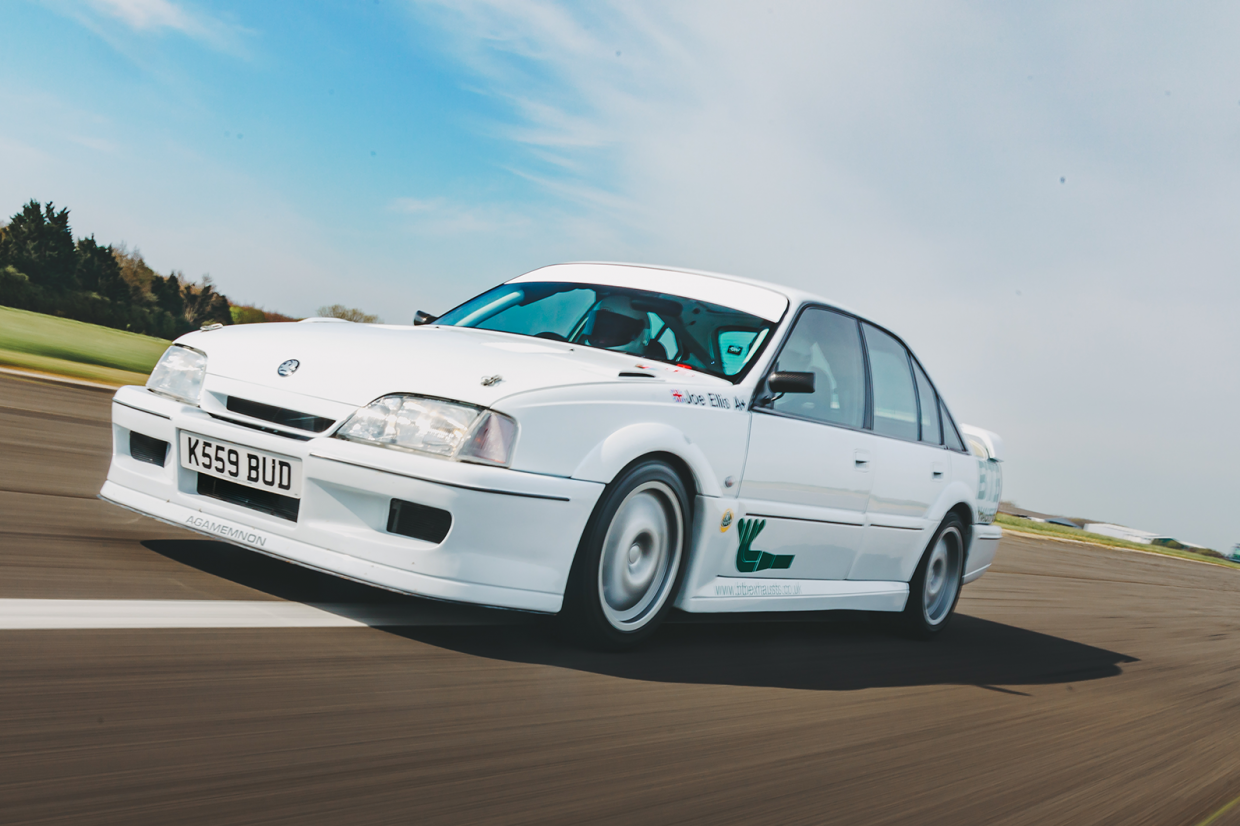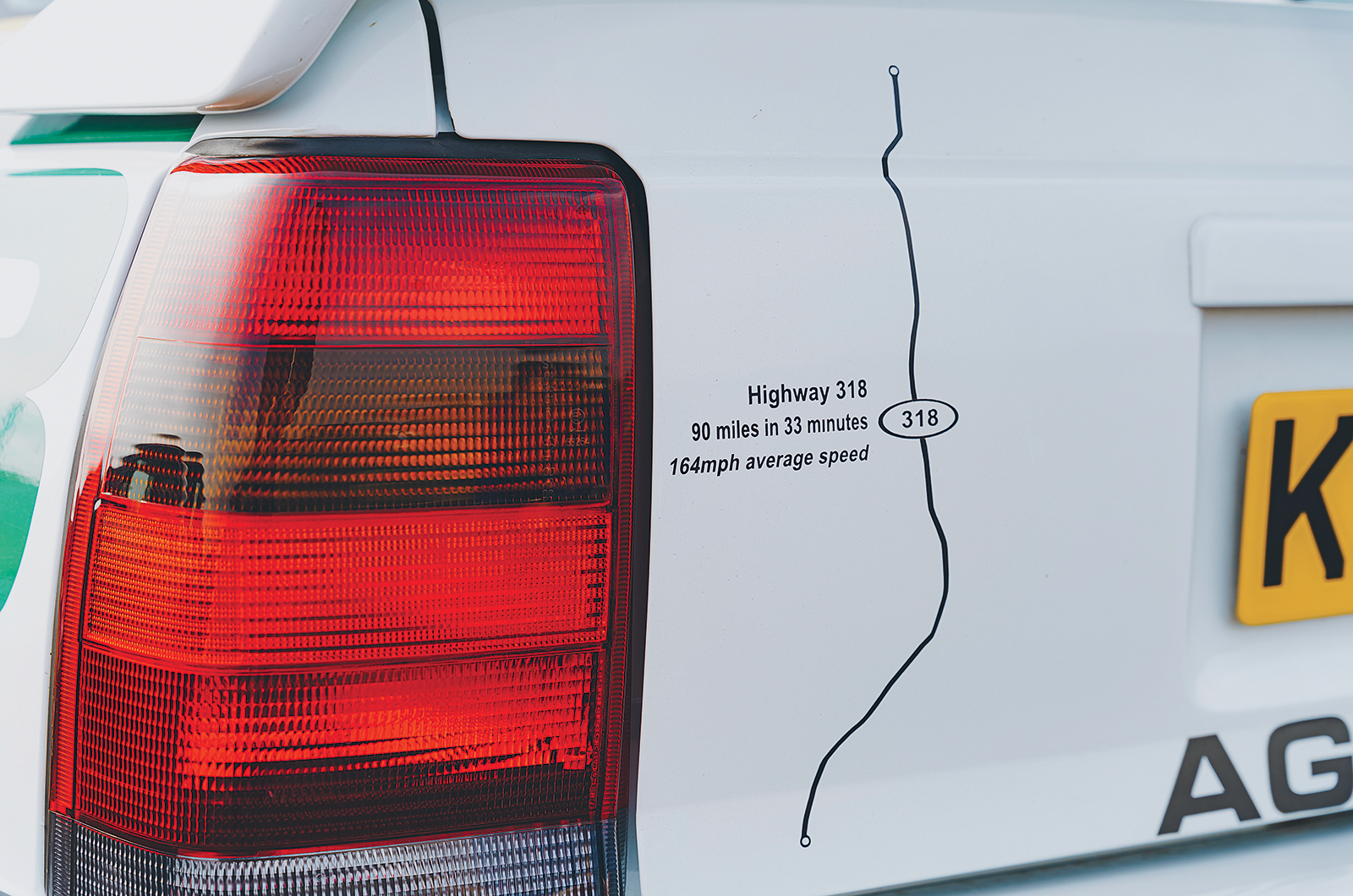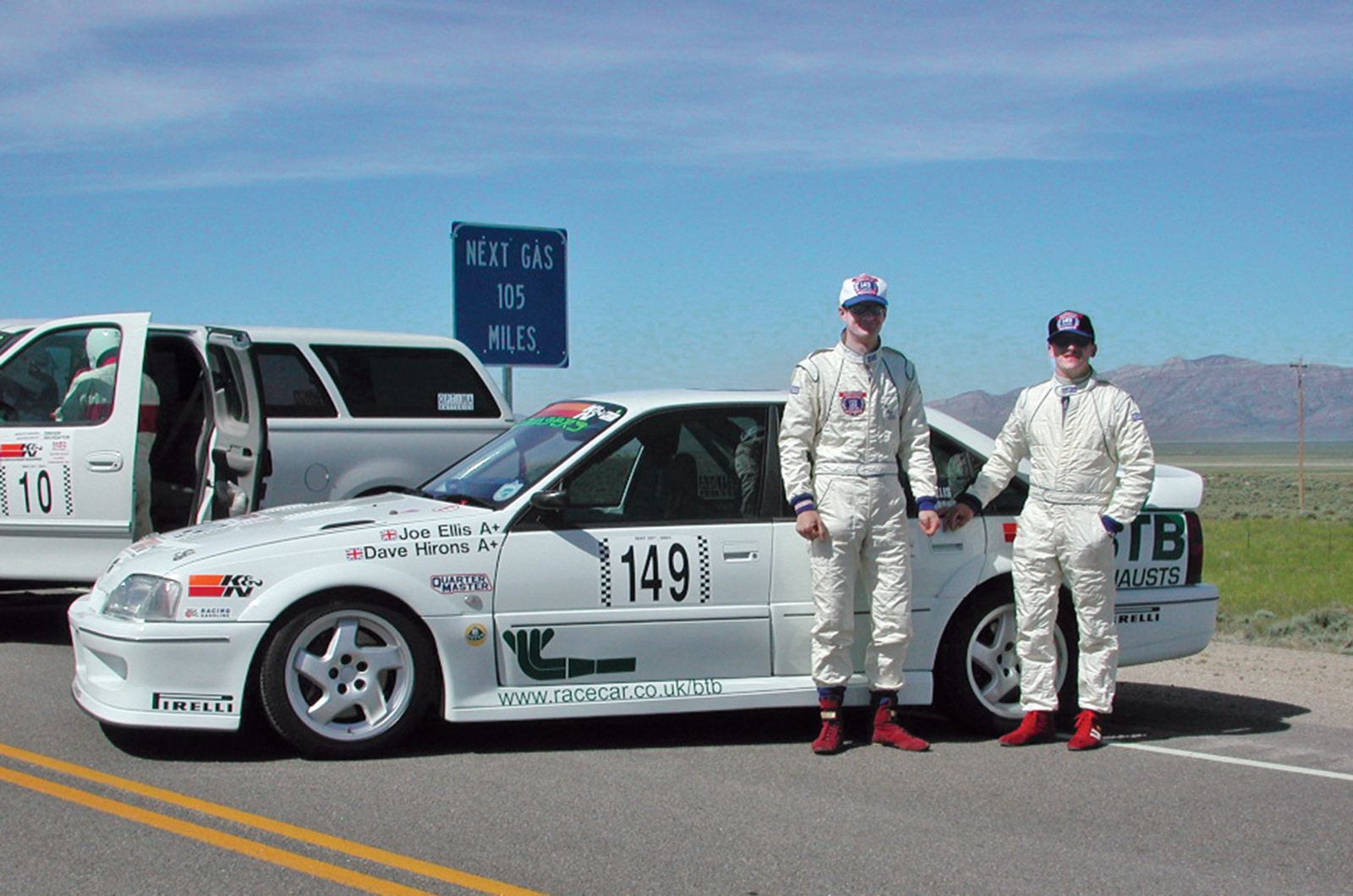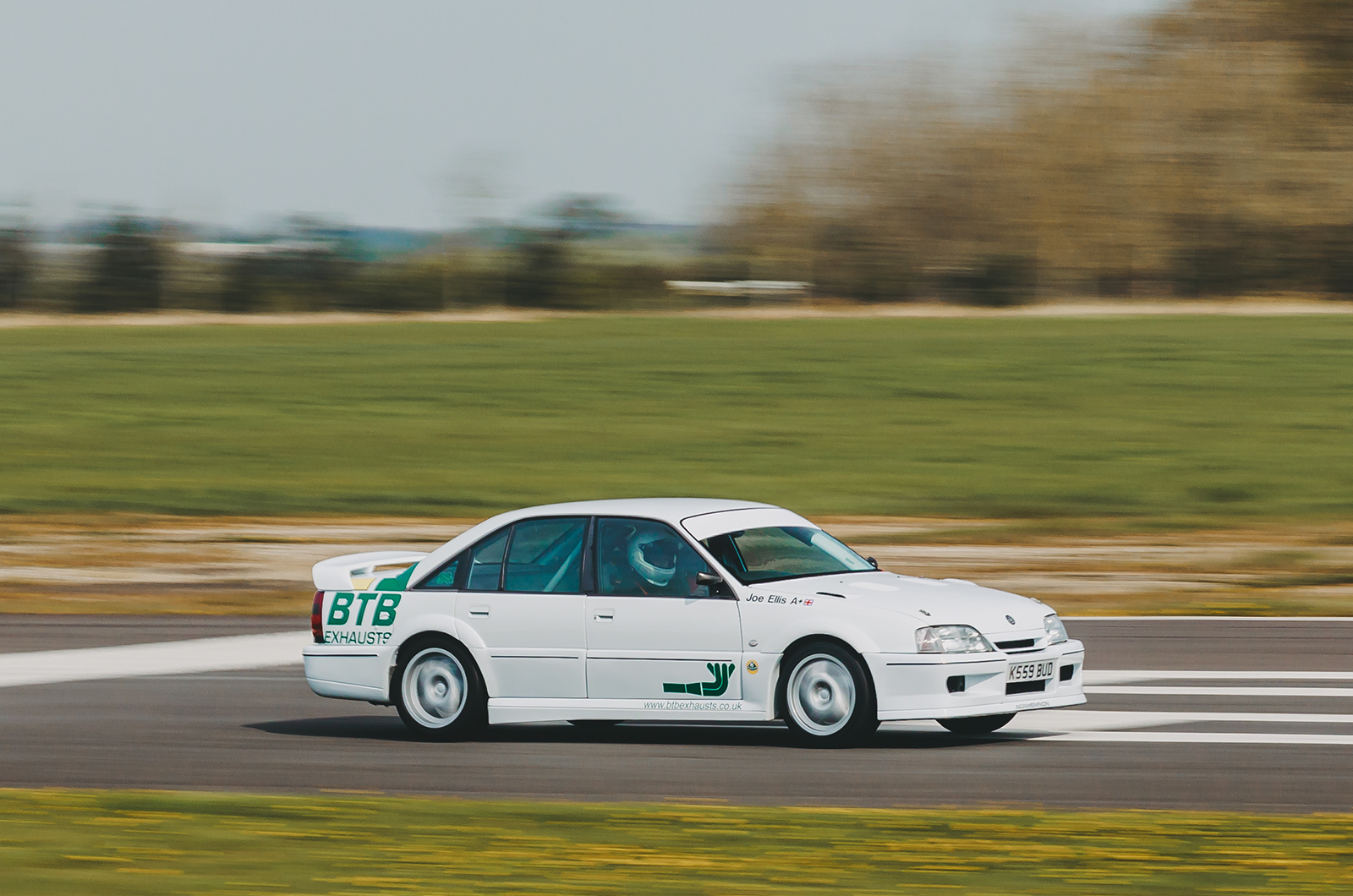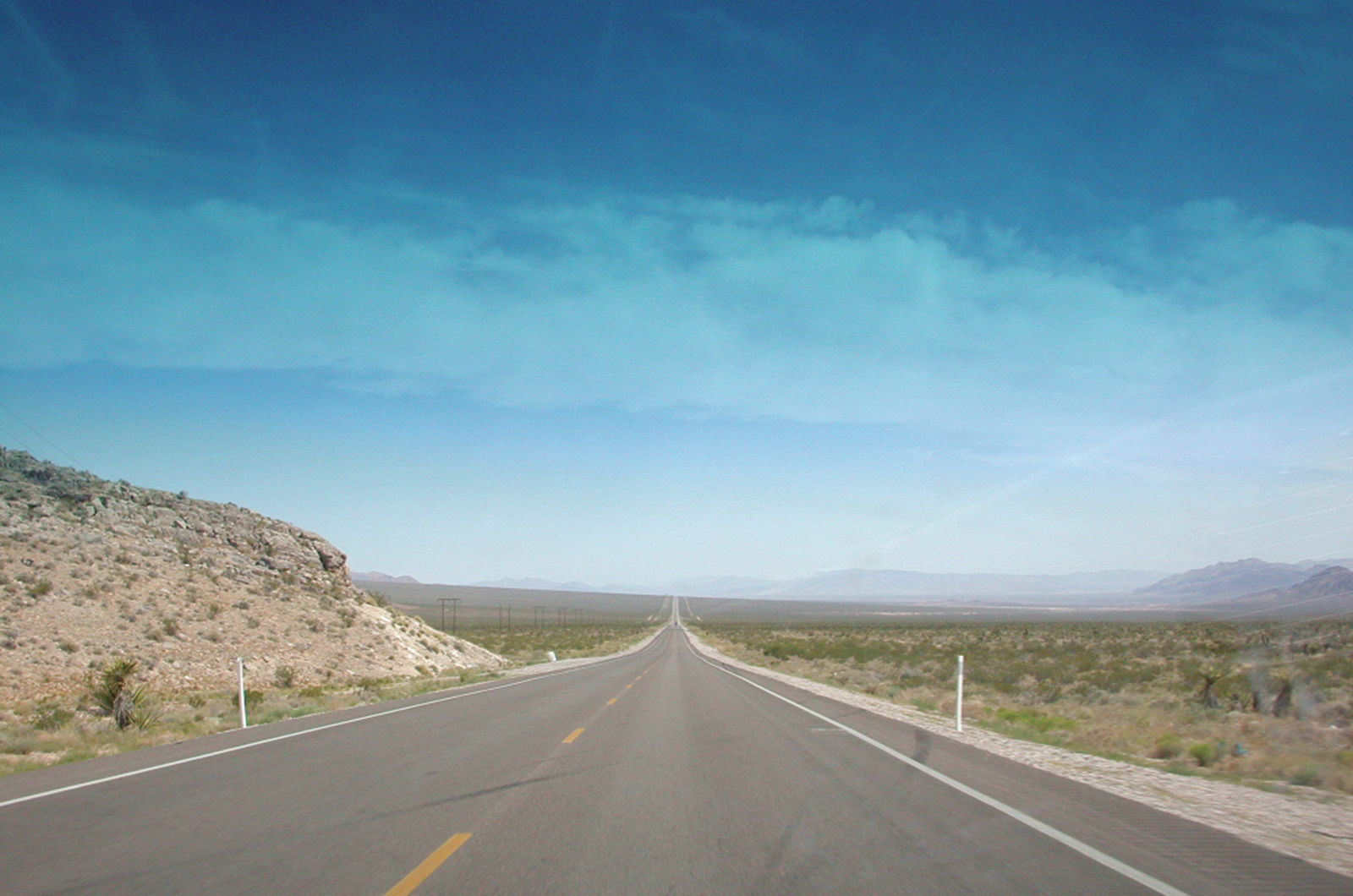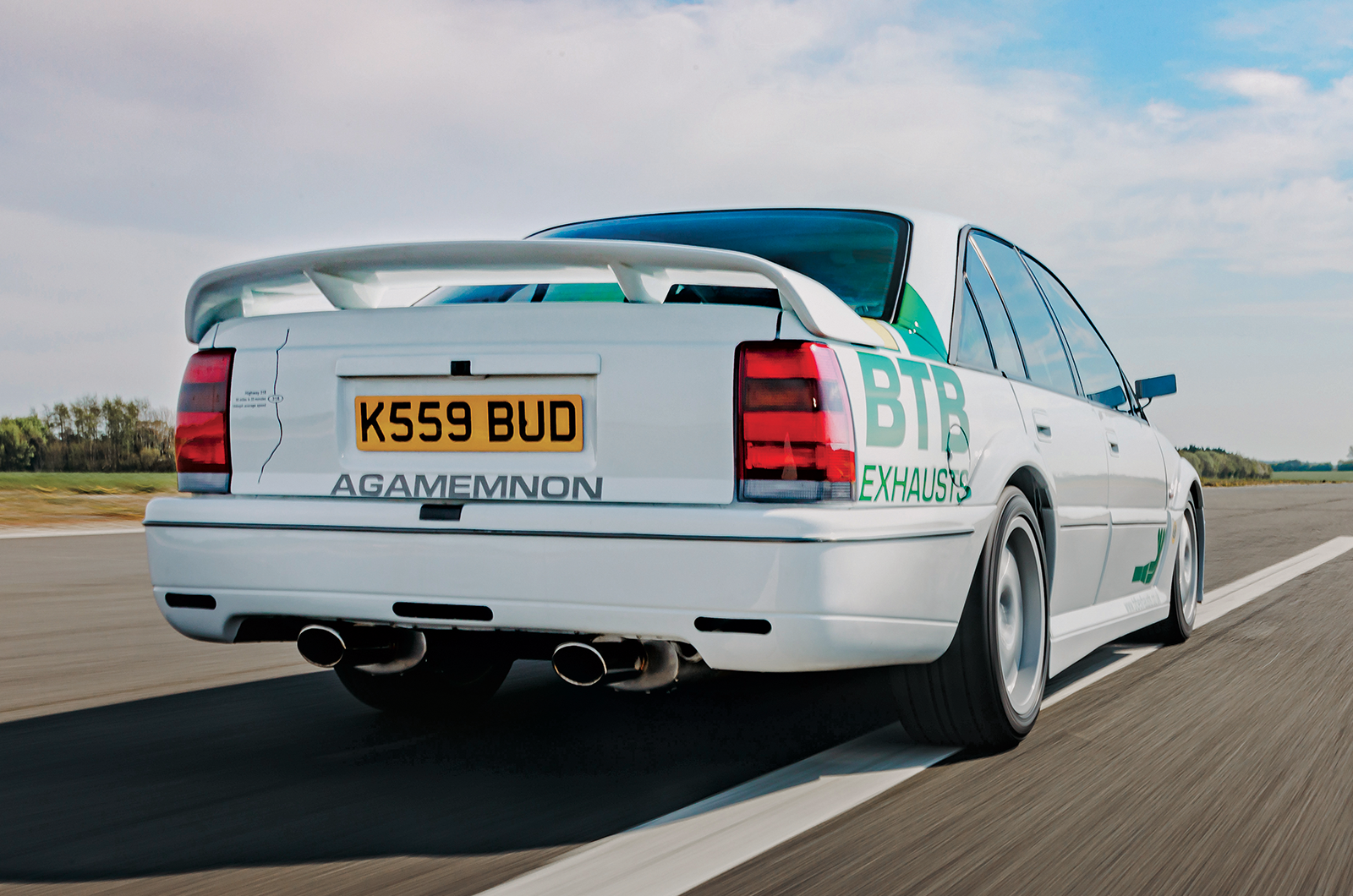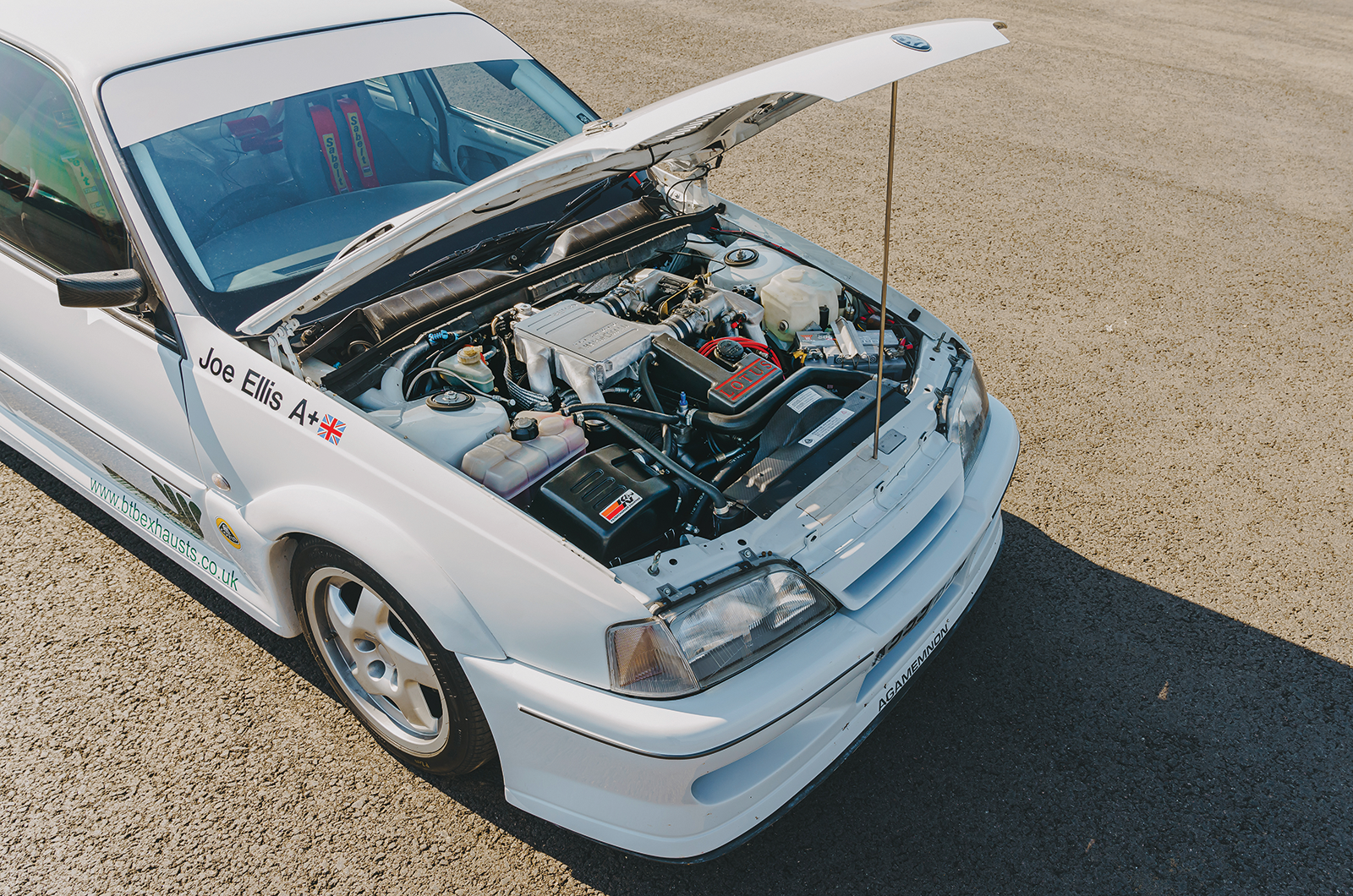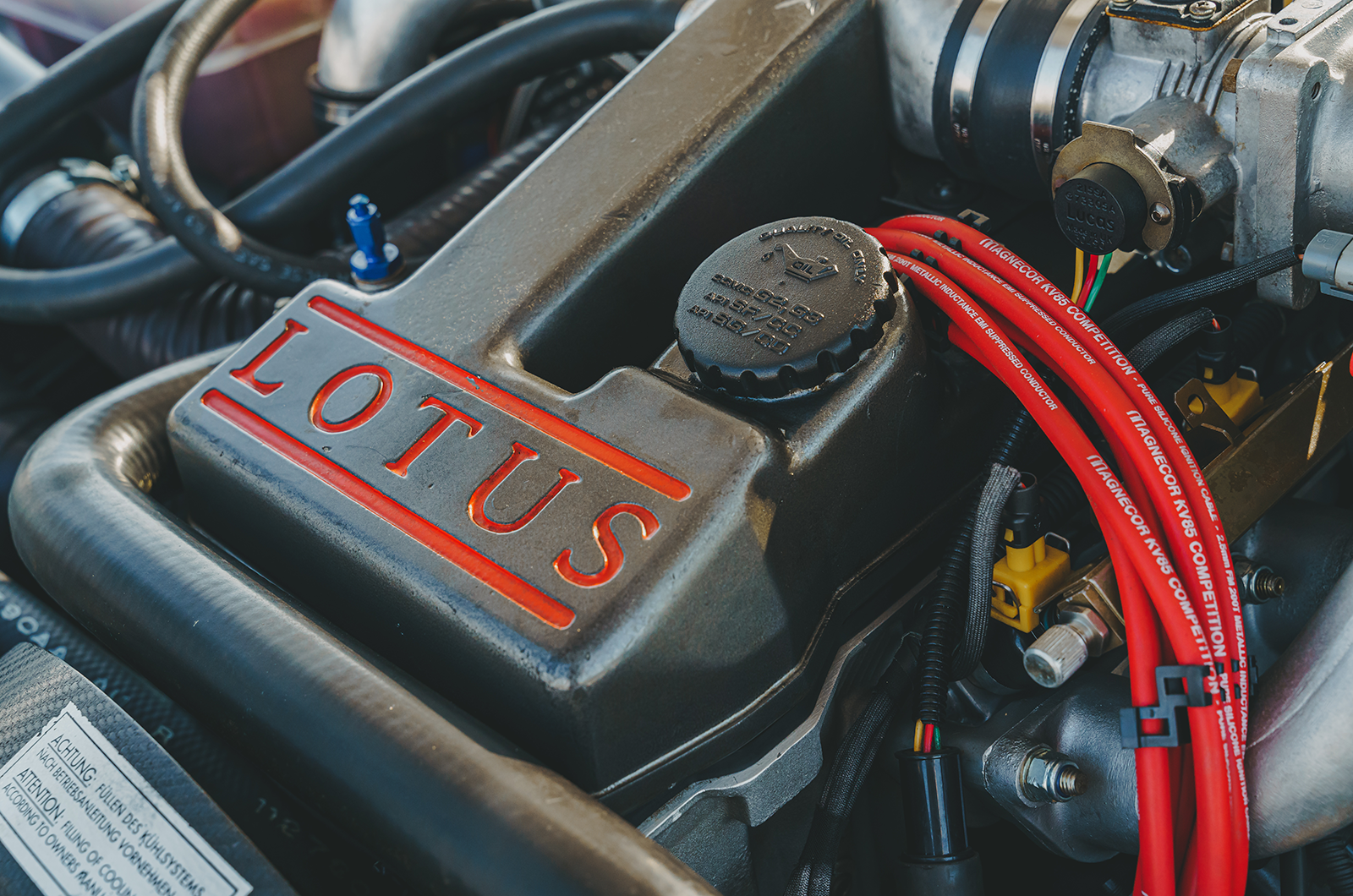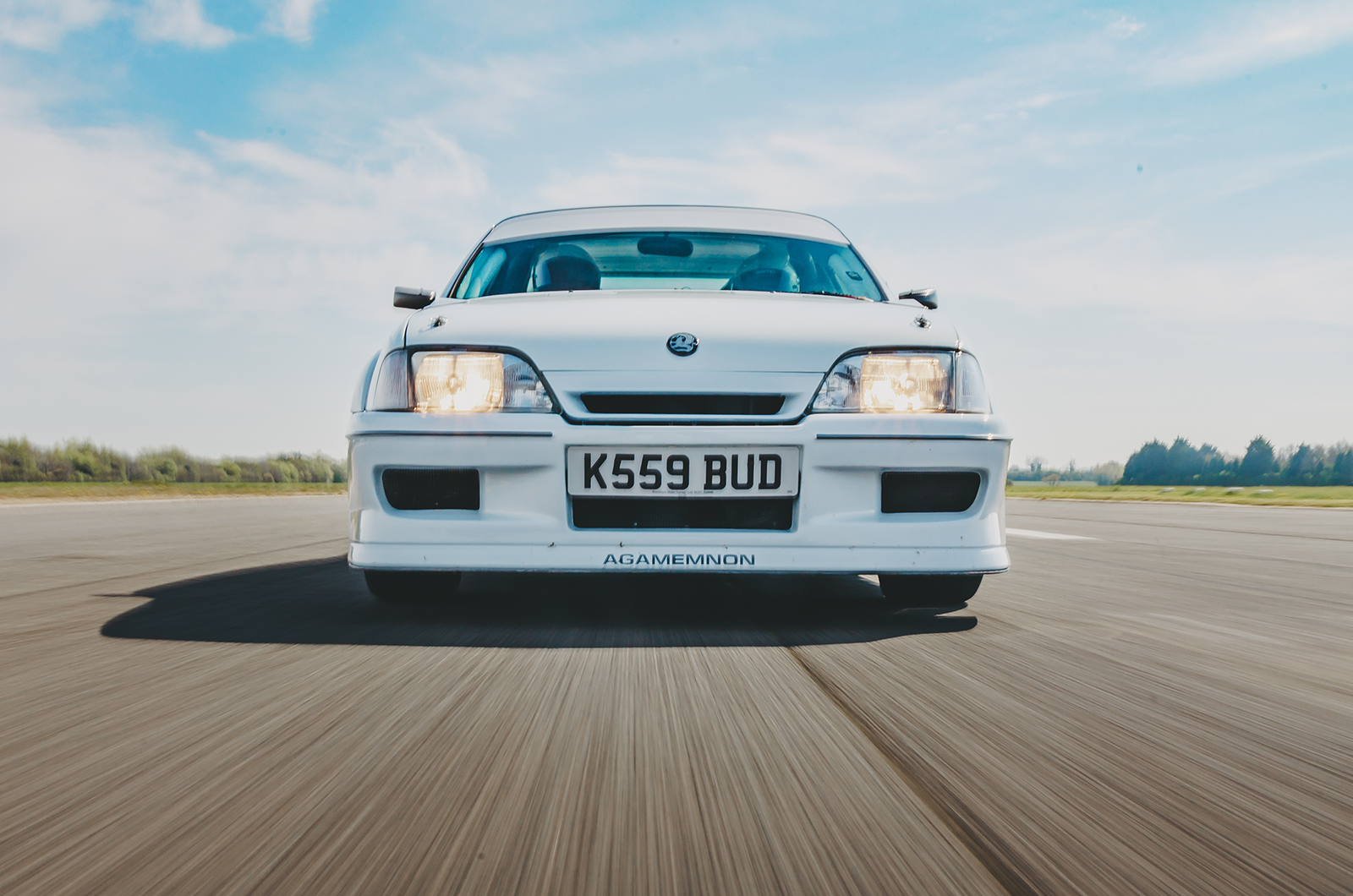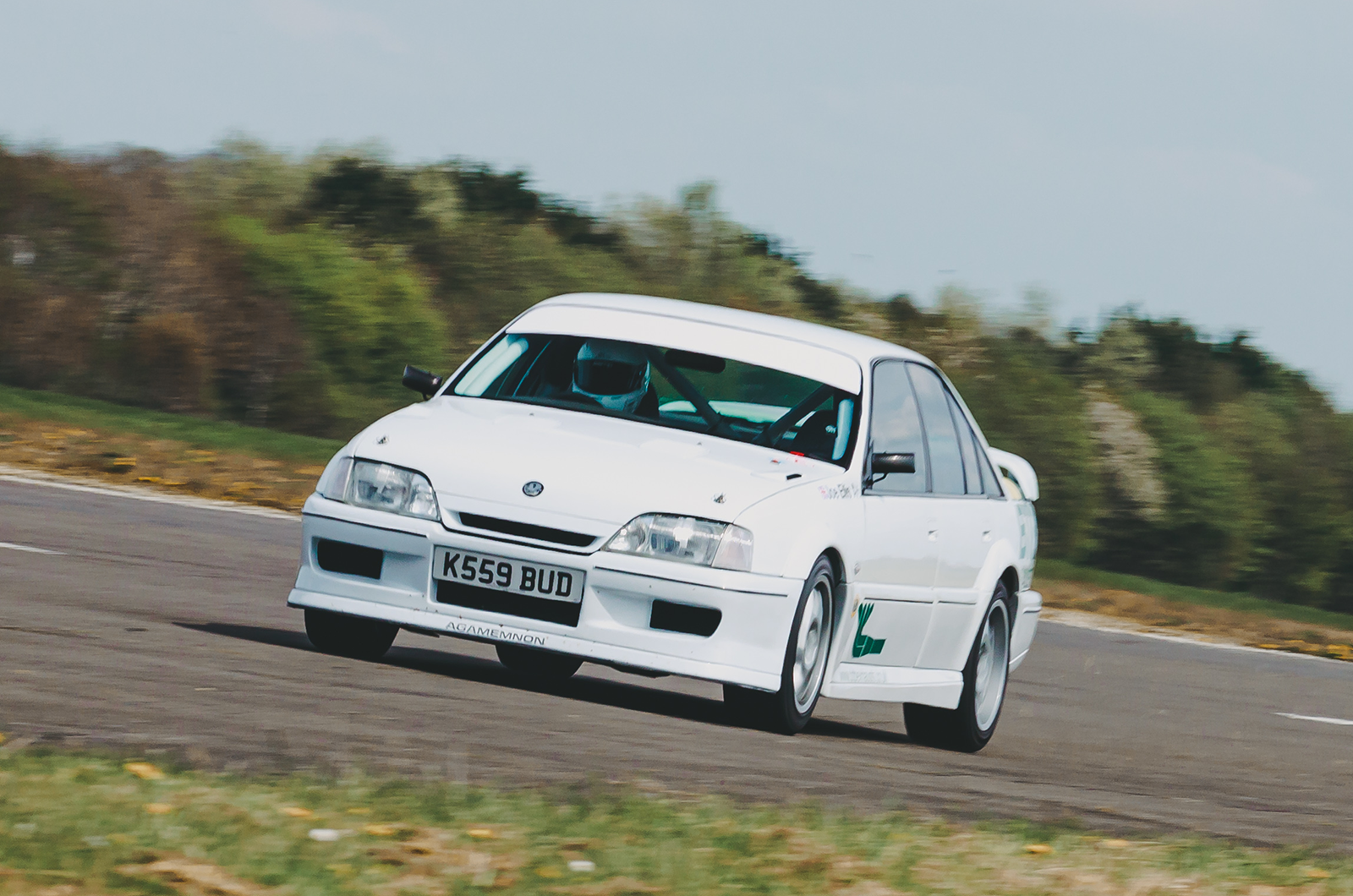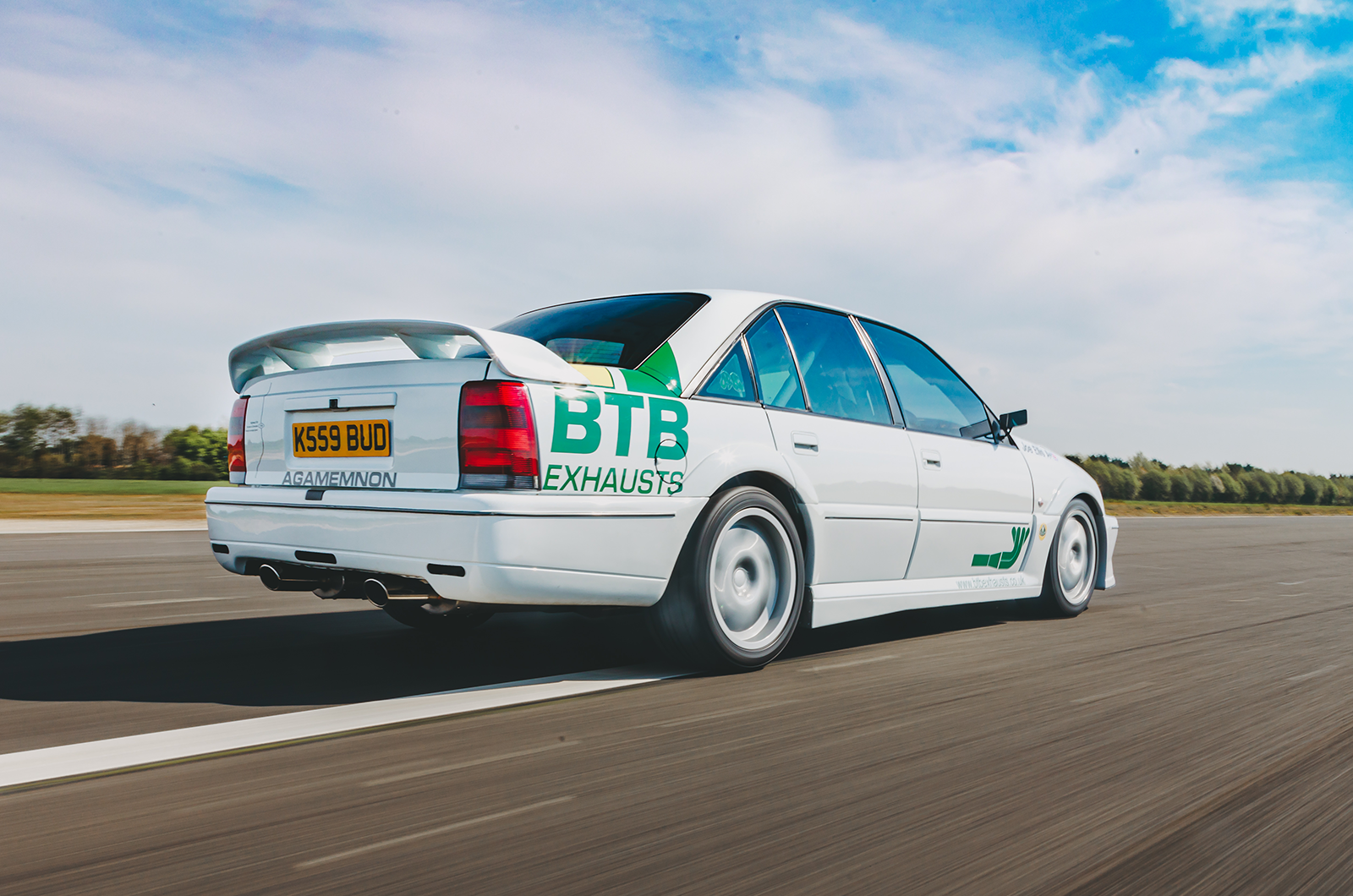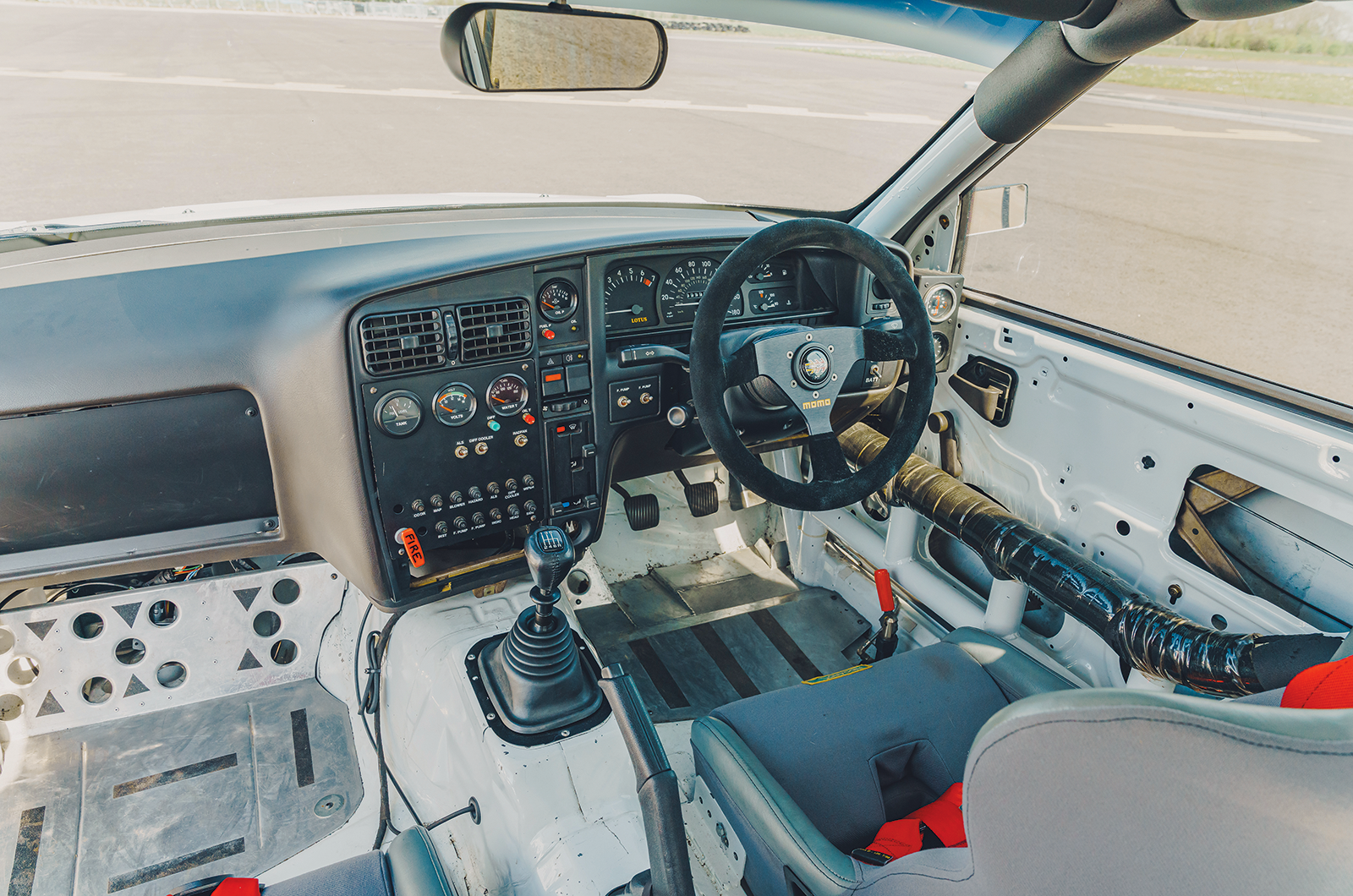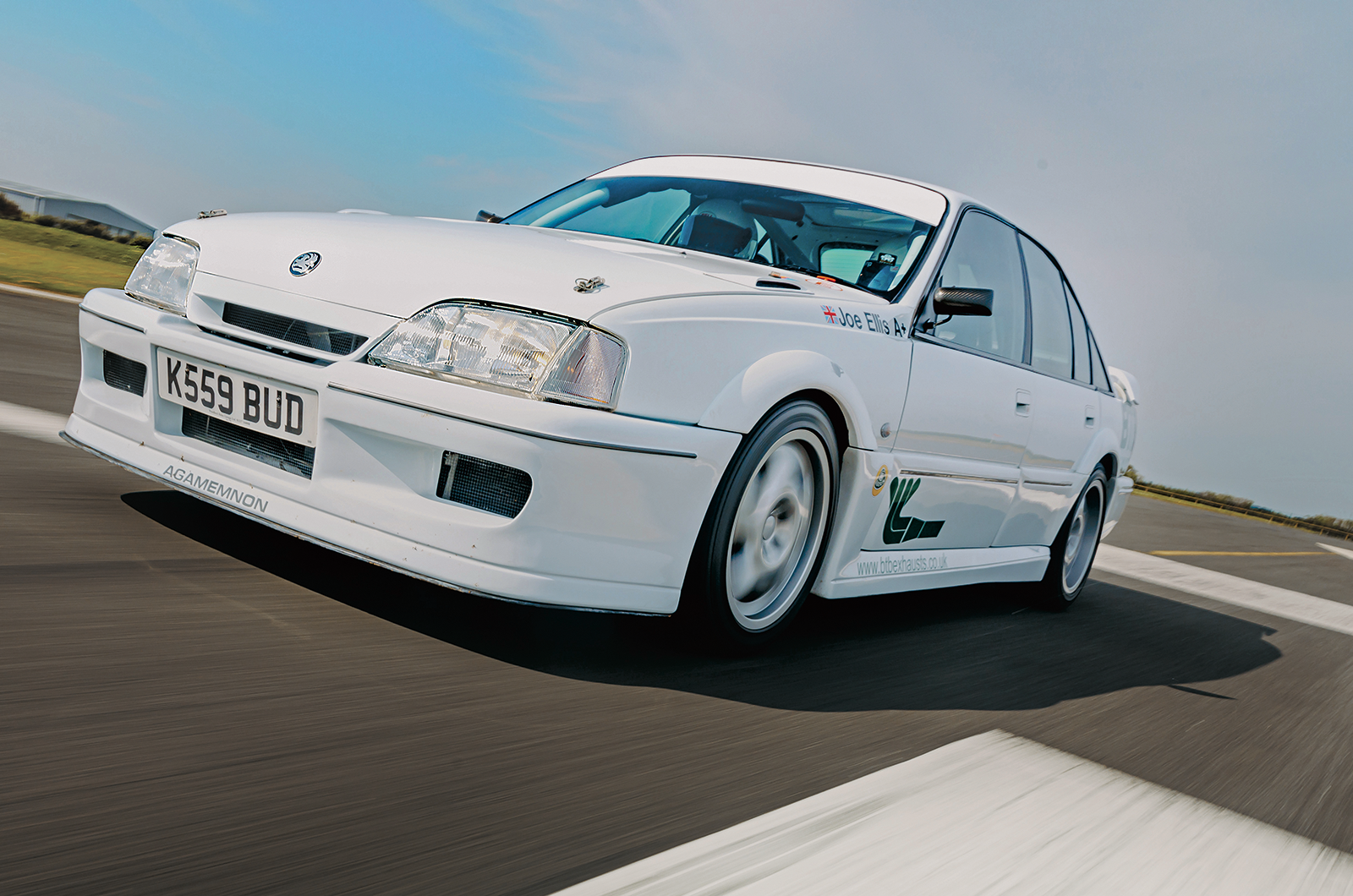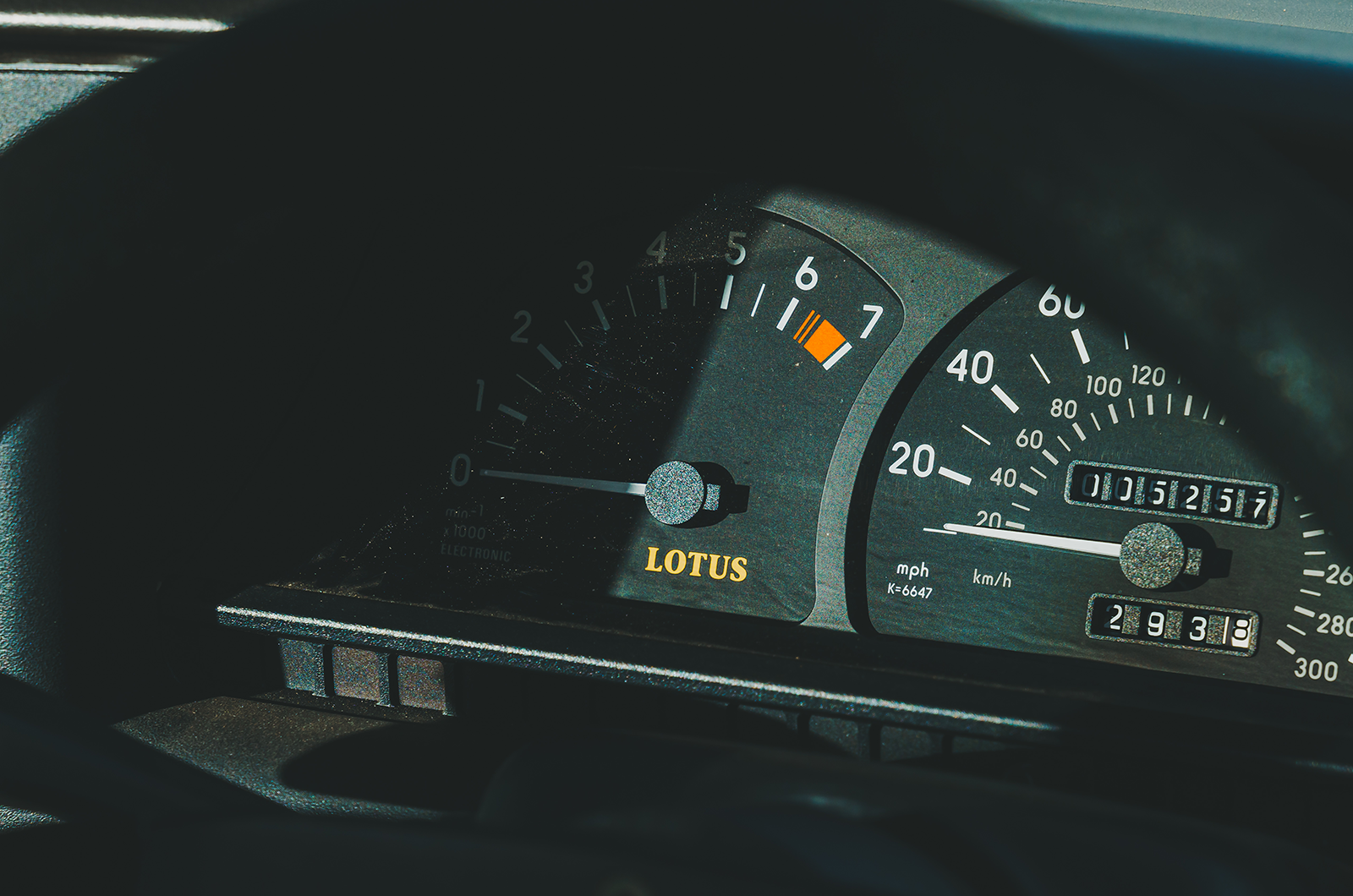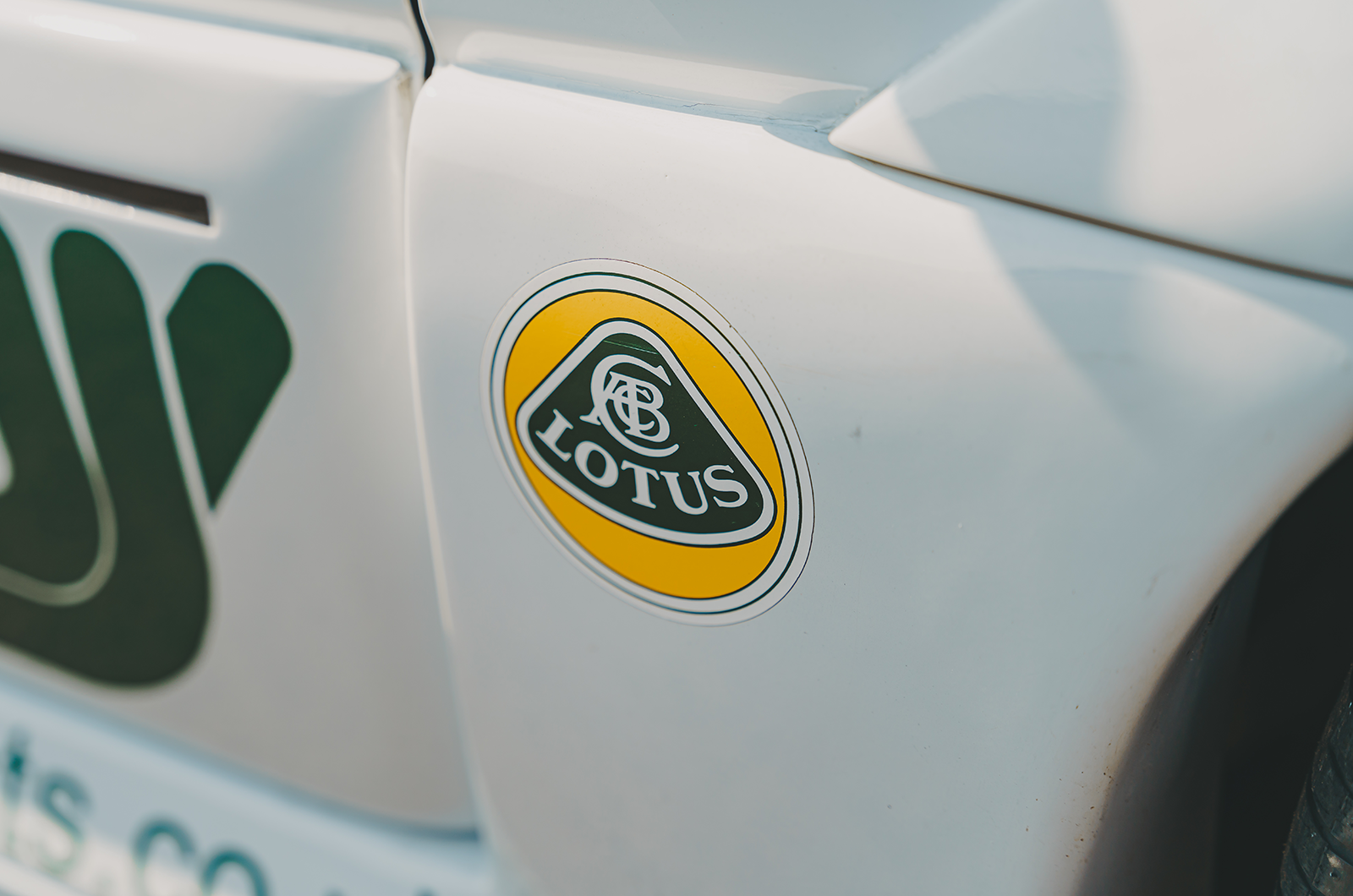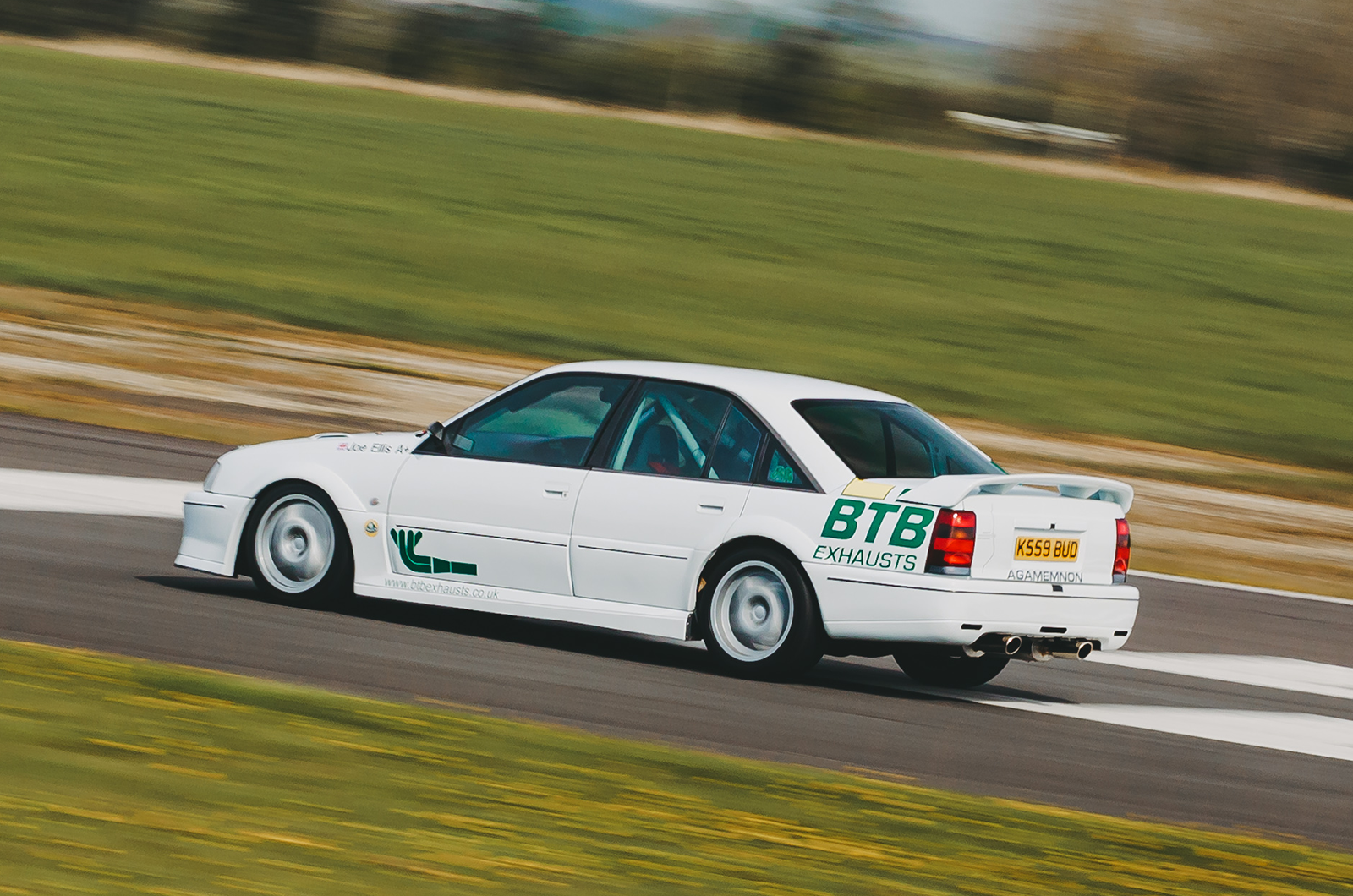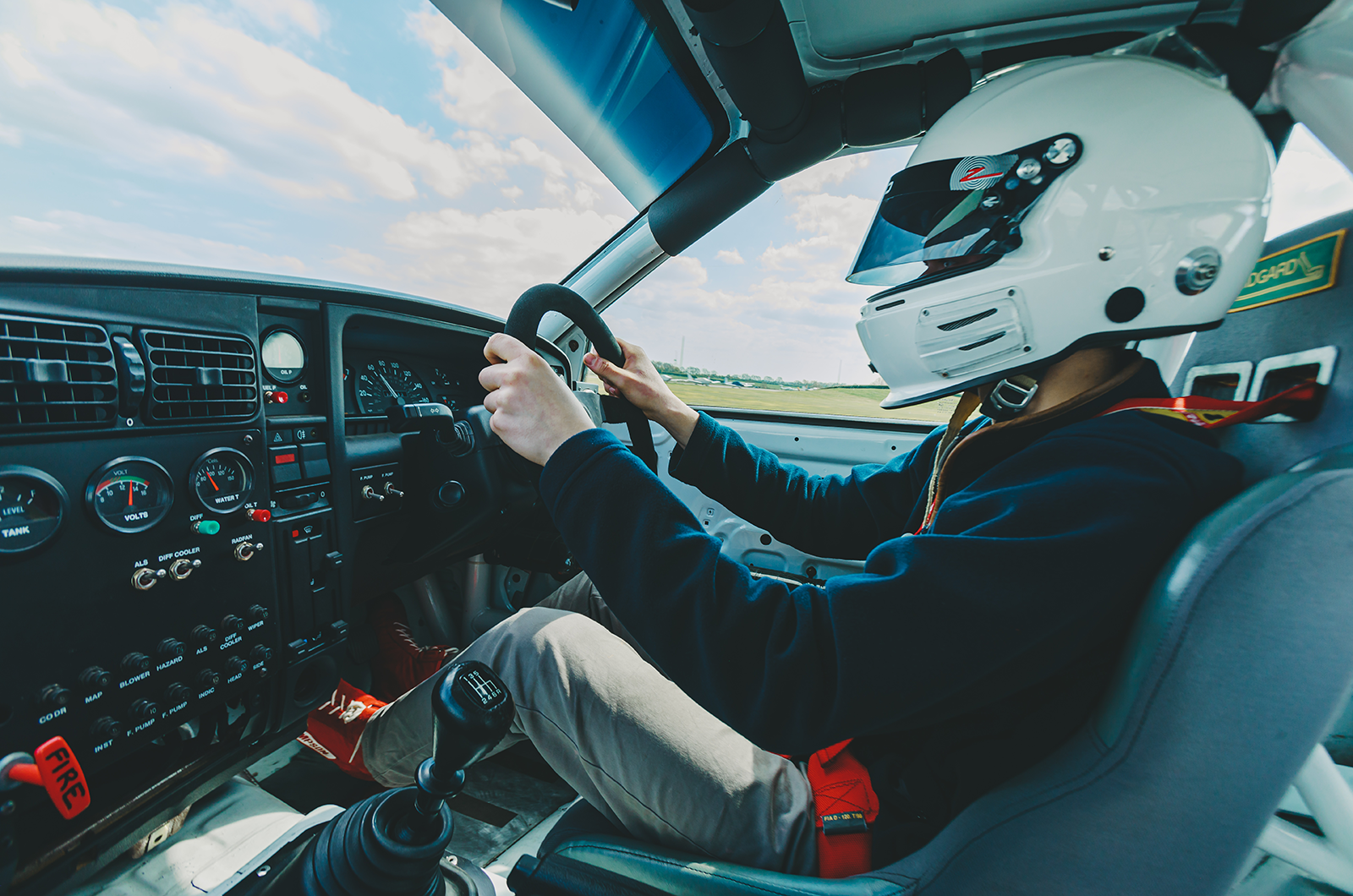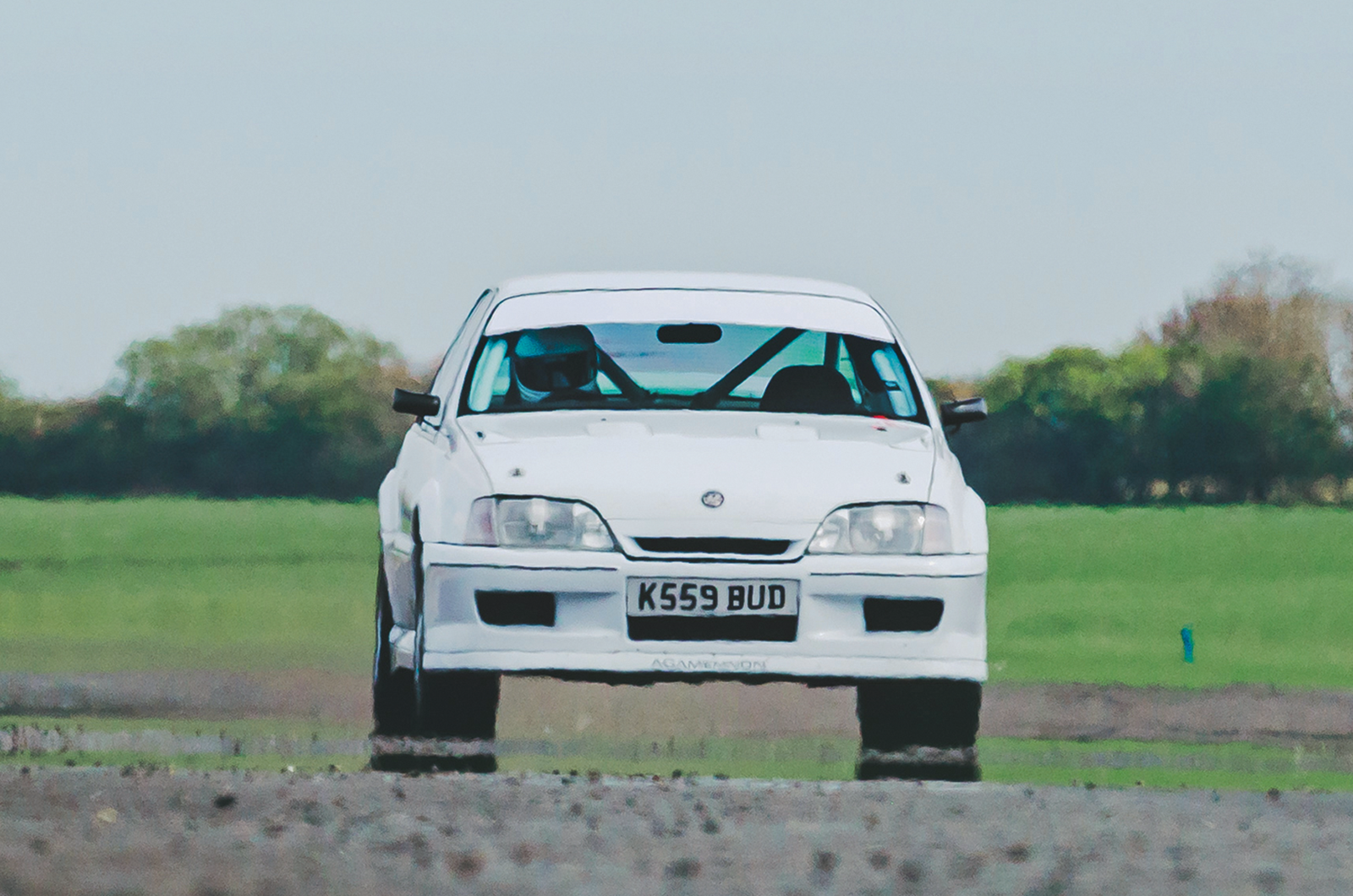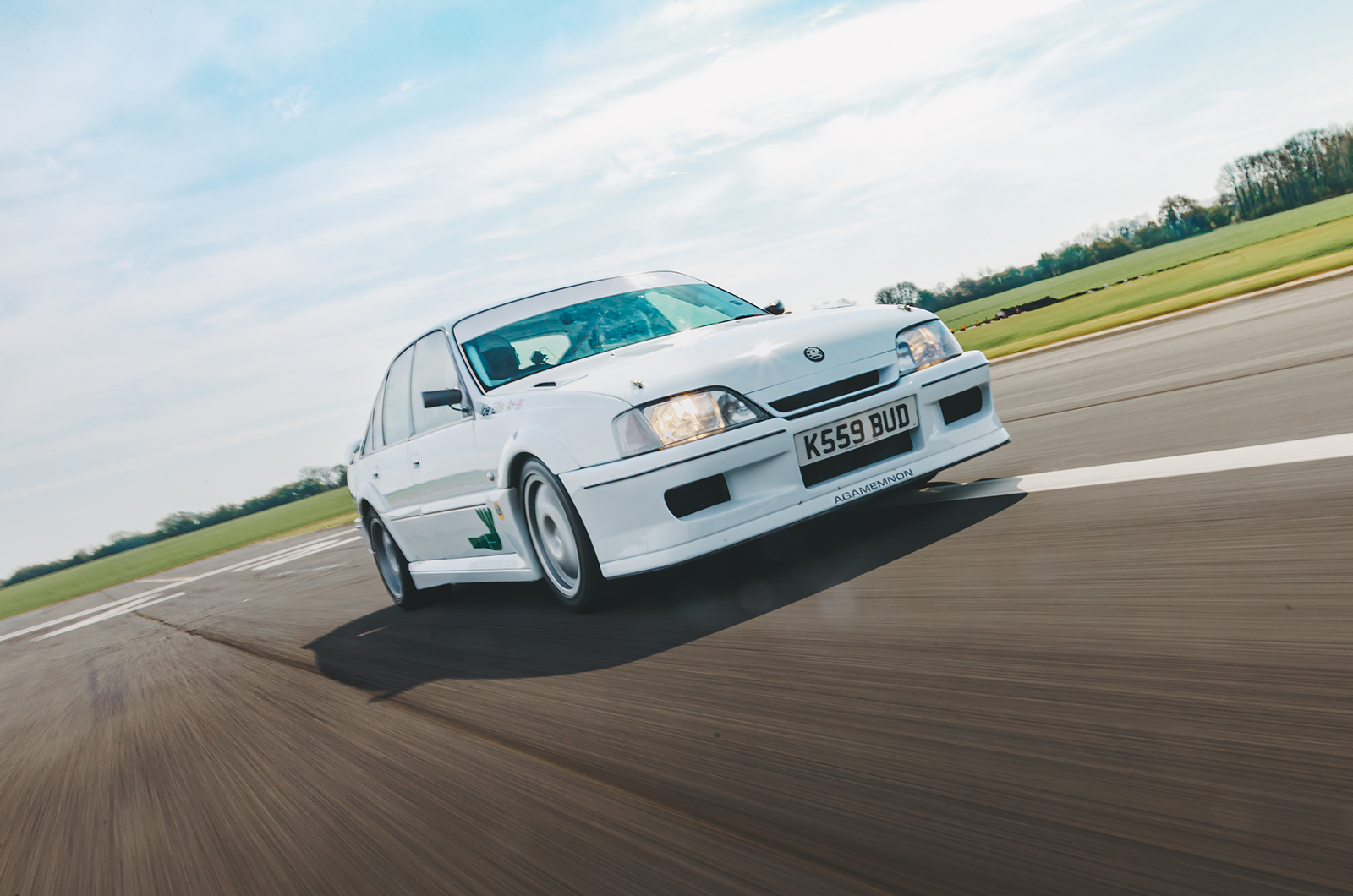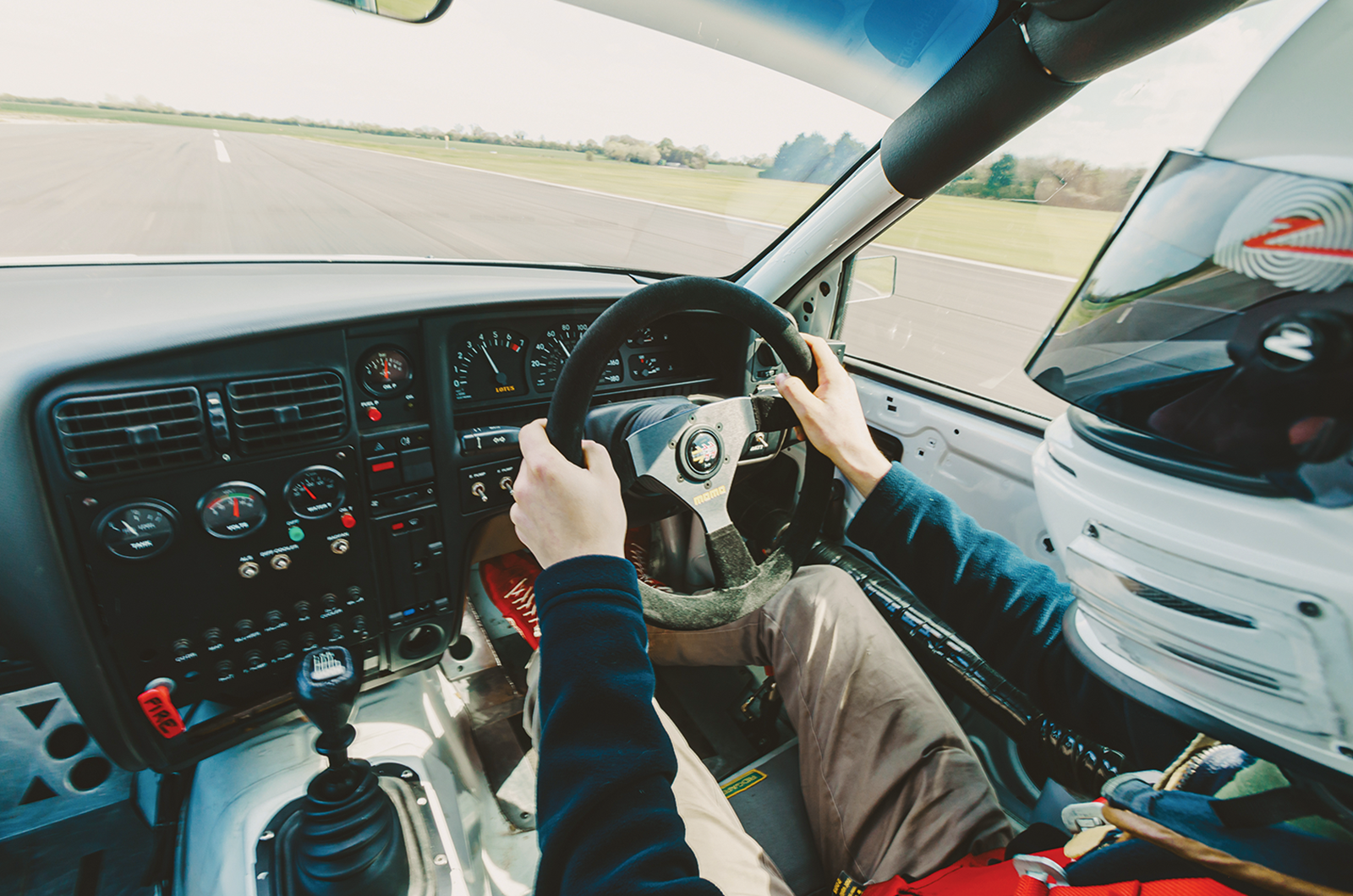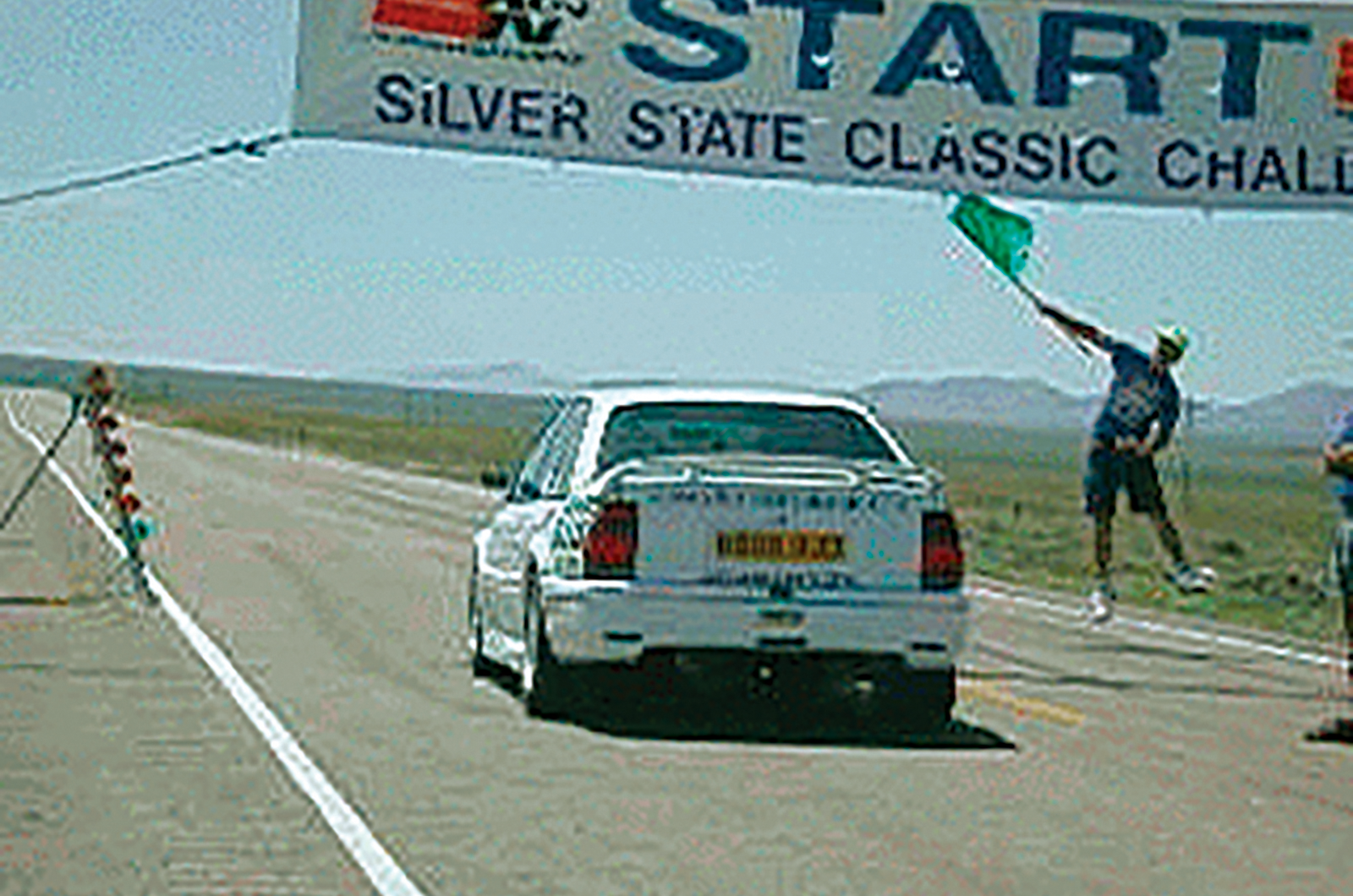“He was lucky it was around the halfway mark, which is where they park the medivac helicopter. They’d already started the engine before the dust had settled. He was fortunate to get away with it.”
Joe Ellis back in the saddle for a blast down the Turweston runway
Having safely navigated to the finish in 2000, averaging 150mph along the 90-mile course and finishing second in class behind a 1999 Corvette, Christmas was spent in Texas perfecting the diff cooler in his friend’s garage: “When we changed the oil very little came out…
“We put an extra fan on, getting air from the positive pressure in front of the rear wing and feeding it to the boot area.
“The natural way of the internal ventilation in the car is for it to come in through a vent in the side of the wing, so we cut some extra slots.”
Ellis’ Lotus Carlton thrives at high speeds
“People wondered why we didn’t put the oil cooler in the air flow, but we were worried about stones – and flies, believe it or not,” says Ellis.
“I spoke to a guy with a Corvette who lost the race when a fly punctured his: he was running on his own, with nobody near, and a stone doesn’t just leap up.
“We had flies spattered down the side of the car.”
Not bad for a low-speed shakedown run
Having failed to hit their 160mph target in 2000, Ellis and Hirons tried again in ’01 but had their eyes on bigger figures – diff permitting: “They scrutineer the car depending on your safety kit, such as the type of fire extinguisher, cage and fuel tank, which limits your top speed.
“We were limited to 180mph, which is the limit of the car anyway, and if they radar you over that speed you’re disqualified.
“They tell you where the trap is, I made sure I was at 180 on the speedo and they registered 177. After that I just went for it.
“Towards the end, almost within sight of the finish, there was a massive crosswind that blew us off the centre line. That got my attention.”
The Lotus Carlton’s powerful brakes can quickly scrub off its heady top speeds
So did what’s known as The Narrows, a stretch of road that pierces the rocky terrain in a series of sweepers: “It’s the only bit where you’re allowed to drop below your minimum speed and, because you’ve been fixated on 12-mile straights, when you approach the first corner it feels as if the car is rolling.
“The dampers get hot and it feels soggy, slow and unresponsive. Going through I saw a snake of tyre marks where somebody had spun.
“It’s 90 miles, but it’s only half an hour. Fluid loss is the main issue, and making sure you don’t lose focus. Plus, the turkey buzzards aren’t used to cars moving at that speed – and they’re big…”
‘It’ll wheelspin in third if you’re really pushing, Ellis says, and the power surge is relentless’
Again, Ellis and Hirons reached the flag, this time third in class behind an astonishing 1937 Ford F1 pick-up and that same ’Vette: “We weren’t too worried about hitting the target, unlike some of the expert navigators in the field who could get within 0.001mph with GPS.
“We wanted to stay within the boundaries and see how fast we could go, and with the wind behind us it was great.
“We got 164mph and qualified for the Unlimited class… then I got married and 9/11 happened, and the rest is history.”
A grab from a home video as the Lotus Carlton sets off on Highway 318 in 2001
The Carlton remains a testament to those runs, venturing out for occasional testing and shows, largely the same as in its Silver State days.
It still happily punches towards its top speed, too, and arrowing down the Turweston runway it only gets into its stride with fourth gear and three figures.
It’ll wheelspin in third if you’re really pushing, Ellis says, and the power surge is relentless: “To get our maximum we ran in fifth at peak rpm, which is 6500, because sixth is massively overdriven.
“We used sixth to knock the revs back a bit, and downhill it would hold 170 or 180, but as soon as there was any kind of incline or corner it just didn’t have the torque.”
Ellis has plans to return to Nevada with his son
Today it barely escapes fourth, though.
“It’s only just getting started at 140mph,” Ellis says, his grin evident behind his race helmet.
Then it stops ferociously before the Tarmac runs out, the smell of brakes floating away on the wind.
Experience appears to be telling Ellis not to return to Nevada, though he’s promised his son Ed they’ll go and he is chomping at the bit. The fright of nearly losing the Carlton when it was shipped back last time no doubt doesn’t help: it means too much to be risked.
Driving the Lotus Carlton still summons the feeling of exhilaration from the wild American road race
“Every time I get in, especially in the hot sun with the smell of fuel and heat, it brings it all back,” says Ellis.
“At the end, the euphoria kicks in and the dopamine rush is addictive, [but] to do it again is pushing the envelope.
“A lot of things go through your mind at silly speeds, and while this could do 200mph, given another 250bhp and a lot more development, I don’t know if I’d want to.
“My imagination had always been caught by The Cannonball Run, going as fast as you could in the desert. I’ve scratched that itch now.”
Images: Max Edleston
Thanks to: Agamemnon; Turweston Aerodrome
READ MORE
An epic Canadian adventure in a classic Volvo
20 hot classic saloons to entertain
The classic Mini with a scarcely believable story
Jack Phillips
Volvo-owning Jack Phillips is a contributor to and former Deputy Editor of Classic & Sports Car
